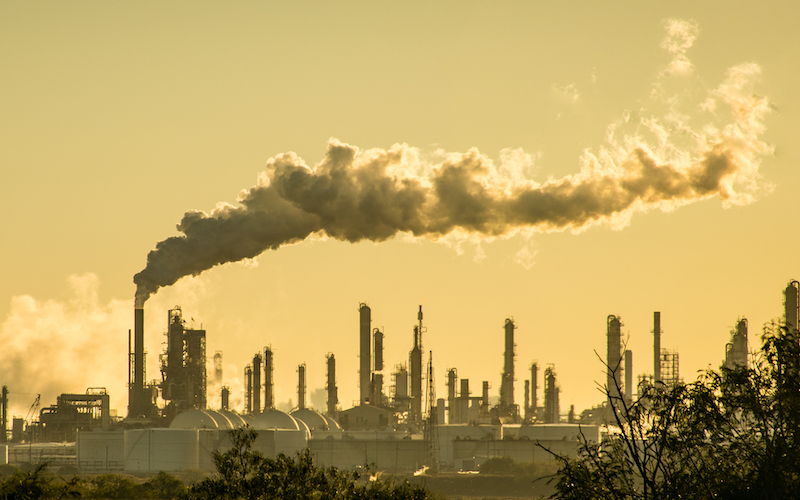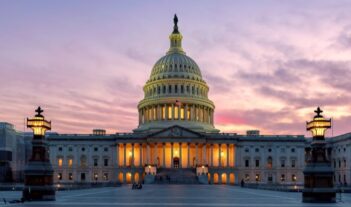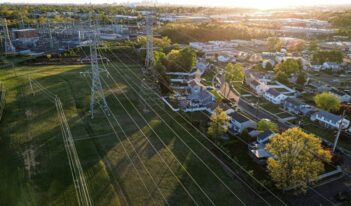
EPA fails to hold environmental polluters responsible during the COVID-19 crisis.
If you were the head of the U.S. Environmental Protection Agency (EPA) as news of the coronavirus pandemic hit, what would you do to implement your mission to protect public health?
The best answer has three parts: first, determine what specific categories of pollution could exacerbate the disease; second, assemble staff experts to develop lists of companies that produce that pollution; and, third, figure out how the federal government could ensure that companies do their best to mitigate emissions.
Rather than take that approach, EPA enforcement chief Susan Bodine issued a memo late last month offering businesses assurance that EPA would overlook certain regulatory violations for the duration of the COVID-19 crisis. Public interest groups, already alarmed by the possibility that regulatory rollbacks at the agency would continue at a relentless pace despite the pandemic, were apoplectic, accusing the agency of inviting industry to suspend monitoring and control even for hazardous pollutants. Four days later, EPA blamed the controversy over its enforcement memo on its own version of fake news, issuing an angry press statement that purported to “correct the record after reckless reporting on temporary compliance guidance.”
What is going on here besides another heated exchange between entrenched opponents? While most of the country struggles to live in the frightening new reality of lockdowns, should we really be worried about the link between excess pollution and fragile public health?
So far, COVID-19 threatens most those people whose health is compromised, particularly those with respiratory problems. Refineries are among the largest and most persistent sources of toxic air emissions in the country. Focusing on just one hazardous chemical emitted by this industrial category—the carcinogen benzene—the Environmental Integrity Project reported in February that six refineries in Texas—including Pasadena Refining—as well as four others in Pennsylvania, New Mexico, Mississippi, and Louisiana—were emitting at levels significantly higher than what EPA has deemed safe.
In Pennsylvania, the concentration was 444 percent higher at the time when the Philadelphia Energy Solutions refinery was still operating. In New Mexico, it was 300 percent above allowable levels. Pasadena Refining in Texas exceeded EPA’s Action Level by 100 percent, while the smallest exceedances were up by 11 percent at the Marathon refinery in Texas City, Texas. All these measurements occurred at the fence line of the plants, posing a direct risk to residents in surrounding communities. And if benzene emissions are so high during ordinary circumstances, what about all the other toxins that accompany the process of turning crude oil into petroleum products?
According to the American Lung Association, over 141 million Americans live in counties so plagued by ozone pollution that they deserve failing grades for maintaining healthy air. Along with particle pollution, ozone exacerbates respiratory diseases such as asthma, emphysema, and chronic bronchitis. In fact, a very recent report by Harvard researchers showed a correlation between fine particle pollution and a higher COVID-19 death rate. The Trump Administration is considering long-term deregulation to freeze ozone standards.
What now that every more difficult breath could prove fatal for people ill with COVID-19?
But air pollution is not the only threat. Large sewage treatment operations often fail, spilling untreated municipal wastewater onto streets and into basements and waterways. Such spills could contain fecal matter that carries COVID-19 particles and liquid industrial waste. Human waterborne pathogens present a serious risk to immunocompromised individuals, and fumes from volatile industrial chemicals could exacerbate respiratory conditions in older people with chronic obstructive pulmonary disease.
Ironically, Greenwire recently reported that firms within industries such as oil processing and paper manufacturing were recently lobbying to have their operations declared essential to avoid shutdown, even as they beseeched Congress for economic aid. Michael Sommers, Chief Executive Officer of the American Petroleum Institute, recently wrote a letter to President Donald J. Trump and the nation’s governors, six days before the Bodine memo came out, asking for “non-essential compliance discretion,” including relief from EPA “routine testing and reporting requirements.” In other words, workers are only essential if they run the plants but not if they maintain pollution control equipment.
In the face of these potential air and water pollution hazards, which could exacerbate the threat of COVID-19 if they worsen, what is on EPA’s mind as it defines its role in the pandemic?
Instead of assistance and, if necessary, stricter scrutiny of facilities causing serious risks—especially those with a record of past violations—Bodine announced a suspension of routine enforcement during the crisis.
The pandemic “may affect facility operations and the availability of key staff and contractors” including the labs that analyze samples, the Bodine memo says. “These consequences may affect the ability of an operation to meet enforceable limits set forth in settlements and consent decrees” with facilities that have already violated the law, Bodine asserts. “Finally, these consequences may affect the ability of an operation to meet enforceable limitations on air emissions and water discharges, requirements for…hazardous waste, or requirements to ensure and provide safe drinking water,” Bodine explains.
Together, this sweeping description of what could go wrong covers far more than paperwork and suggests that pollution could increase significantly over the months ahead.
The remainder of the Bodine memo focuses on the enforcement “discretion” EPA will exercise to relieve pressure on regulated entities. Bodine emphasizes that “entities should make every effort to comply with their environmental compliance obligations.” But if compliance is “not reasonably practicable,” a phrase that is never defined, EPA explains that facilities should assemble and save some information for future reference. Such information should demonstrate how facility operators acted “responsibly” to “minimize the effects and duration” of any noncompliance. Facilities should identify the nature and dates of the violations, explain how the pandemic caused the problem, and return to compliance as soon as possible.
That is it.
Facilities are not required to assess the potential effect of excess pollution on public health already jeopardized by COVID-19 infection. EPA does not advise them to respond with urgency and additional resources to such situations. And EPA does not declare itself open to using federal resources to mitigate such hazards.
To be sure, the memo continues for several more pages, requiring facilities to send any reports to the “implementing authority,” which could mean either federal or state officials. The agency anticipates sewage overflows and excess air pollution but adopts no protocol for ensuring that these potentially serious violations stop. At the end of the memo, EPA pledges to “focus its resources largely on situations that may create an acute risk or imminent threat to public health or the environment.” The gap between this promise and the memo’s extensive recognition of understandable nationwide violations yawns open and is never filled.
One small comfort is that EPA has previously delegated most of the authority to enforce the law to its state environmental counterparts, which are—in theory—free to police violators and bring them to justice. The bluest, most independent states—California and New York, for example—could simply ignore the Bodine memo and threaten to crack down on any opportunists who read “reasonable” broadly enough to justify serious violations.
Two related problems, however, arise with enforcement in the rest of the country: funding and political will. In another recent report, the Environmental Integrity Project found that in recent years “30 states cut funding for their own environmental agencies and 40 reduced their staffing.” For example, Texas, North Carolina, and Illinois cut their funding by 35 percent, 34 percent, and 25 percent, respectively. Overall, state environmental agencies cut about 4,400 positions, gutting many states’ ability to police violations in the best of times, much less the worst. As for political will, even states that are determined to act may no longer have the resources to do so.
No one who keeps track of the Trump Administration’s environmental agenda was shocked by the Bodine memo. Yet—regardless of how much the outrage, fatigue, and the sheer depth of the COVID-19 crisis may numb our reactions—this development is outrageous because it leaves major industries to self-regulate. The unrelenting war on regulation has claimed another victory, and we will never discover what was lost.




